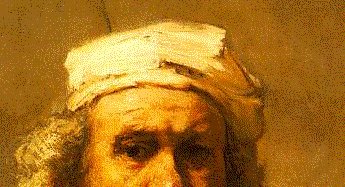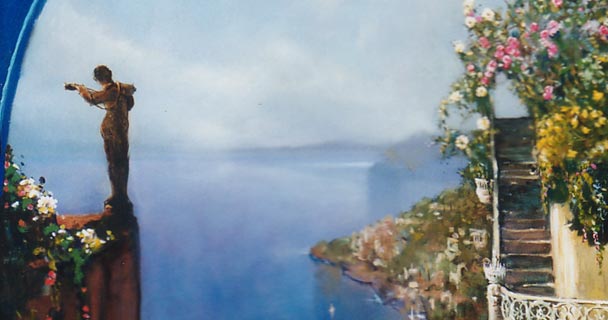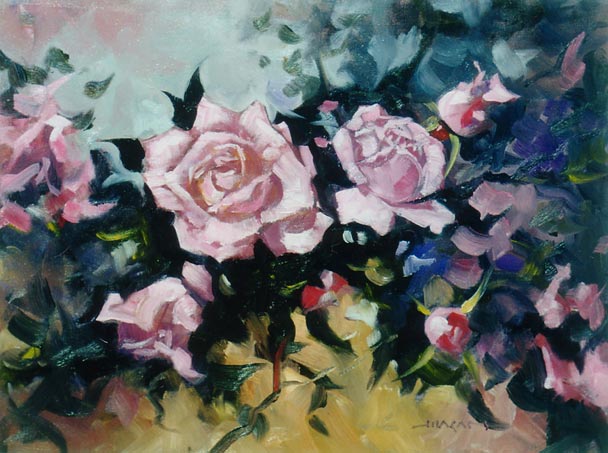|
TEXTURE PAINTING
The worth of an artist was once determined
by his or her ability to disguise brushstrokes and produce 'magic' surfaces
and textures. A few - Rembrant and Titian in their later years - decided
paint had a tactile quality itself and sometimes layered the paint to produce
a separate effect. Rather like Rodin often left parts of his marble sculptures
'in the rough' to emphasise their other qualities. Mostly they used white
as that pigment was the cheapest .It was also the slowest to dry and could
be safely applied over the successive layers of dry thin darks.

This use of excessive body in paint took
off with the development of cheap mass produced paint in the early and
mid-eighteen hundreds. One of the first exponents of this 'impasto' method
was Turner and his use of white. Turner would often sculpt some landscape
element in heavy impasto, wait for it to dry then coat and wipe with successive
transparent galzes. The depressions and cracks would fill and the highlights
would realise their sculptured effect. Also the galze over the white would
make it glow - even more so if even more galze and white was later applied.
STUDENT ACTIVITY: The ultimate weapon in this texture effect is the pallet knife. If you would like to experiment with this you will
get remarkable effects by treating your canvas like a mud heap and shovelling paint around with the knife. Create loose forms if you like. Stop
just before the colors completely disappear into a mass of grey mud. Now
take some pure color and with the knife gently fold it into the mixture
- blending in some areas and in others leaving a few of the edges sharp. Be liberal with your paint but just use a small surface ... Allow 40min.
Then there is the dragged dry brush or scumble effect, mainly in the distant sky (dry
the oil out of the paint on blotting paper if you need to).

Or the slick oily in the bottom half of my rose painting (adding
more oil or medium to your paint).

Experimenting with paint and texture will
provide wonderful moments but try not to make this and end in itself. Great
paintings have a magic that transcend the sum total of their parts.
|